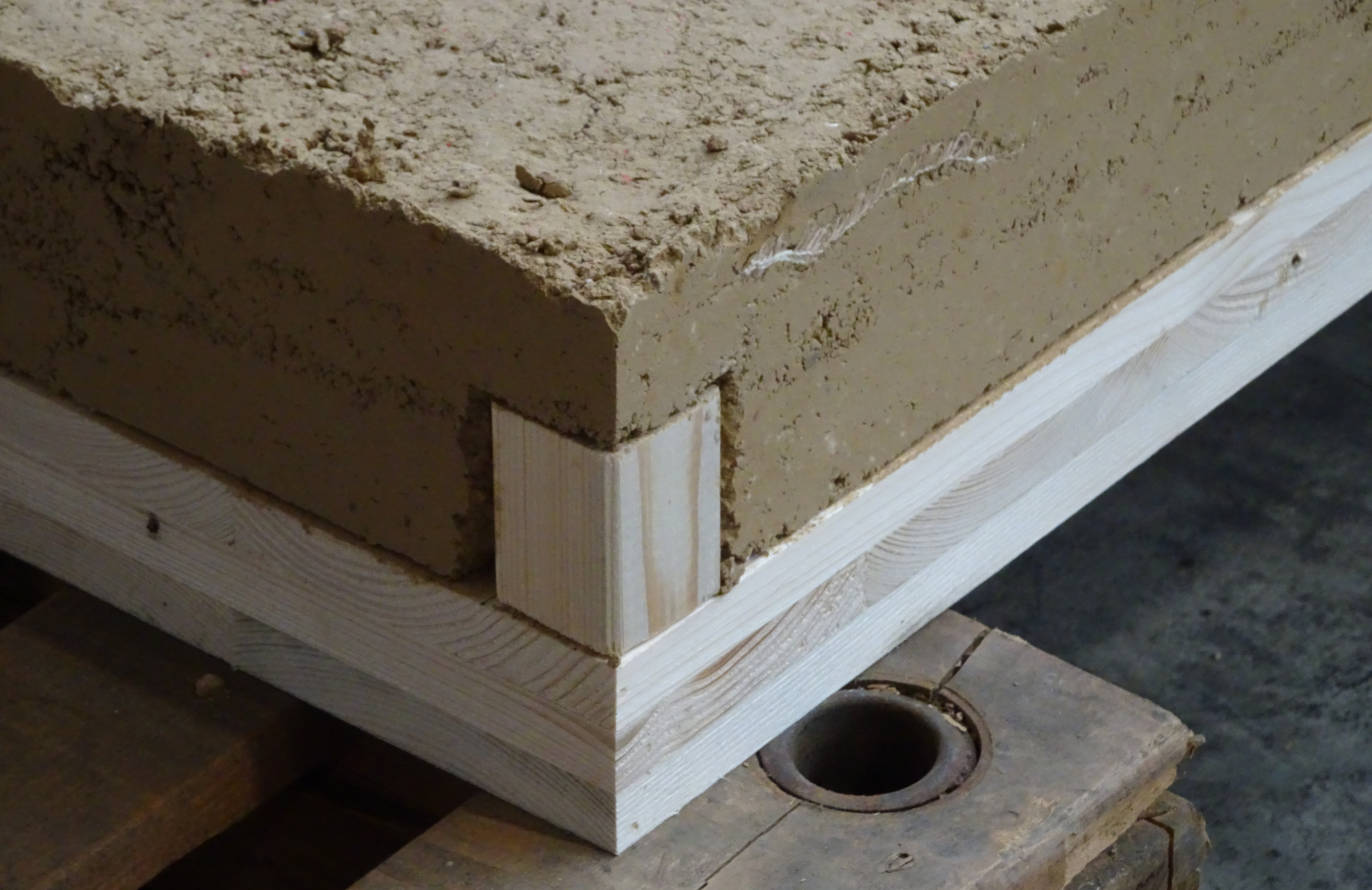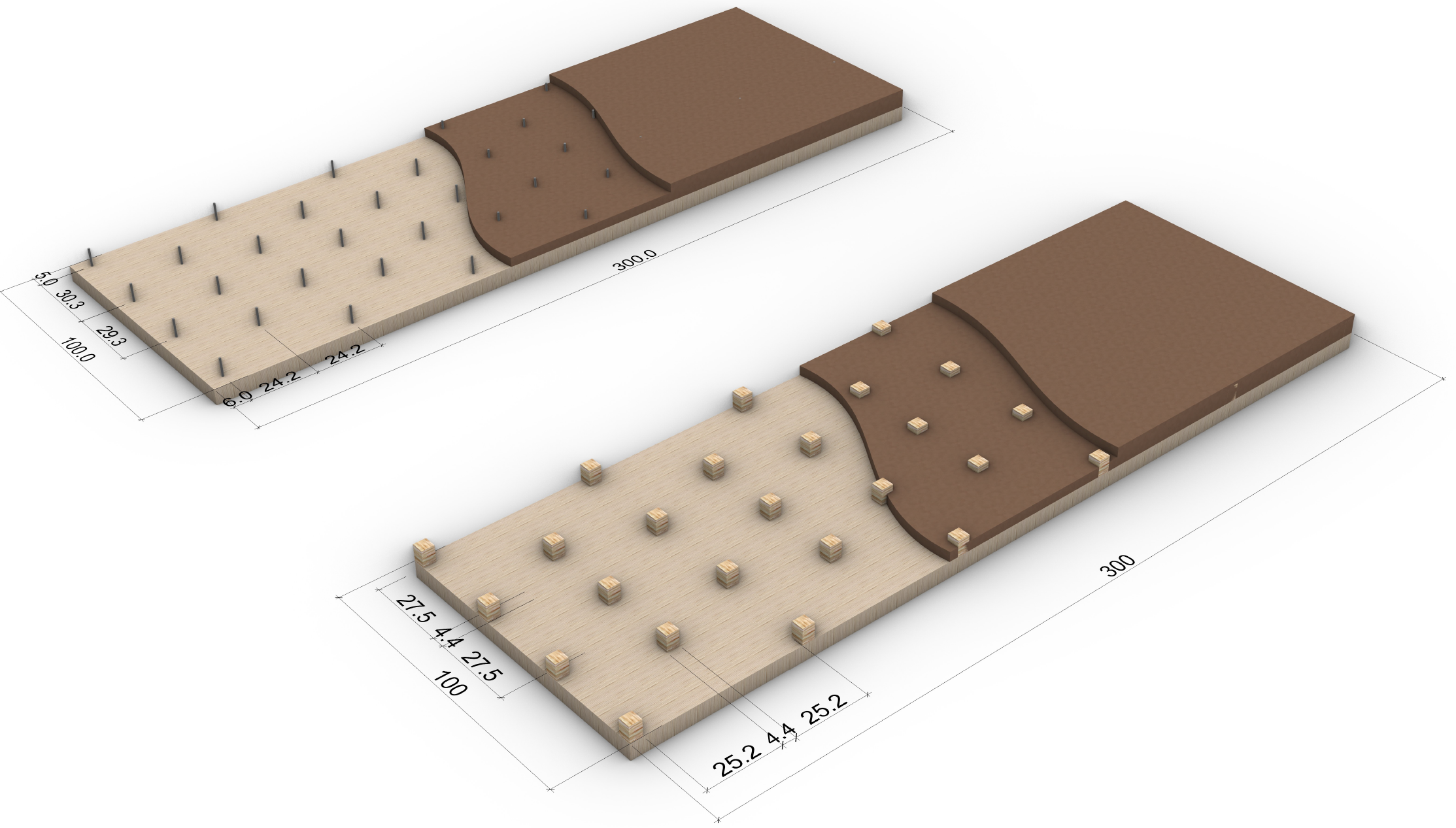Timber Earth Composite
This research focuses on the investigation of hybrid timber-earth composite components for load-bearing, horizontally spanned structures. The emphasis is on the potential of this material system, which combines the complementary properties of timber and earth to offer advantages in load-bearing capacity, sound insulation, fire protection, and thermal mass. This enables the development of components with improved properties while simultaneously reducing wood consumption.

In the construction industry, the continuous development of innovative and sustainable building materials is becoming increasingly important. The use of local, natural, and renewable materials, as well as the reinterpretation of traditional building techniques, are key strategies for developing and applying ecological and circular building materials.
Bending-stressed components account for a significant amount of resource consumption in the construction industry, offering great potential for reducing greenhouse gas emissions through the use of natural and reusable materials such as timber and earth. Clay is widely available in Europe, particularly in southern regions, and contributes to the sustainability of building materials through its local availability. Despite often being underestimated, earth possesses sufficient compressive strength and has historically been used for load-bearing applications such as walls, arches, and domes.
Unlike established hybrid composite materials such as reinforced concrete or timber-concrete composites, whose irreversible material bonds hinder resource-efficient reuse, this research aims to enable a circular use of the materials employed.
A key aspect is the bond at the interface between timber and earth, which must be designed to create an optimized shear connection. To assess shear transfer capacity, a series of push-out tests were conducted based on established methods for timber-concrete composite systems. Various connectors, including screws and wooden shear connectors, were tested to optimize force transmission.

The transferability of these composite properties to larger scales was examined through tests on full-scale (1:1) components, using both screws and wooden shear blocks as connectors. To validate the results from small-scale shear tests, the first full-scale components were designed, structurally tested, and analyzed in terms of their deformation to assess the composite behavior.

Contact:
Tamara Haußer
Riccardo La Magna
Projects:
Terra Timber
Publications:
Timber‐Earth – Structural Behaviour of a Composite Material for Horizontal Building Elements

